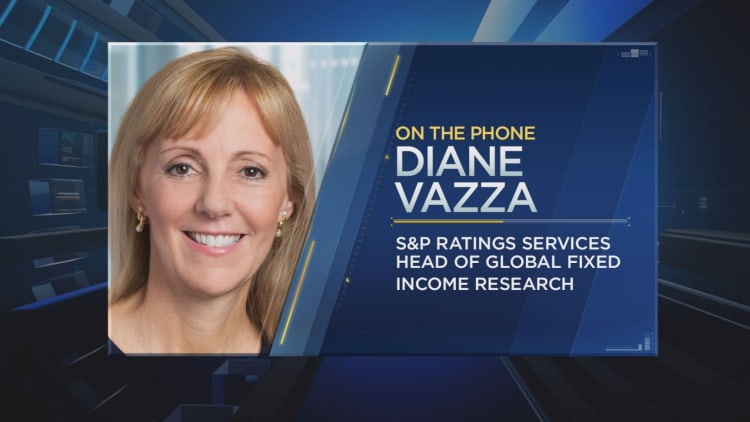
The default rate for high-yield bonds has risen to the highest level in six years, and a top bond analyst sees more bad news ahead for investors in so-called junk bonds.
According to S&P's fixed income research team, 3.8 percent of companies with "speculative-grade" debt have defaulted over the past 12 months through March, which is the highest that rate has been since 2010. This as 12 companies with poor credit ratings (hence their "speculative" nature as well as their high yields) defaulted in March.
Defaults are only likely to increase over the rest of the year, predicts Diane Vazza, S&P's head of global fixed income research.
Vazza says the 12-month rate will rise to 3.9 percent by December in a base case scenario. And in what Vazza calls a "pessimistic," but plausible, chain of events, the default rate could rise to 5.2 percent. That would correspond to 70 U.S. defaults during 2016.
To be sure, default rates have looked far worse in the past. Speculative-grade defaults rose above 10 percent in the wake of the tech bubble, and speedily surged to 12 percent in the credit crisis.
Default rates "are historically low ... but we are seeing some softness," Vazza said Monday on CNBC's "Trading Nation."
It's probably no great surprise that plunging commodity prices have a lot to do with rising defaults. Of the 36 speculative-grade defaults in the past year, half are "commodities-related" according to Vazza, because those companies operate in the energy space or are metals and mining names.
Meanwhile, in the month of March, S&P downgraded its credit ratings on 2 ½ companies for each company it saw fit to upgrade.
So how are yield-seeking investors reacting to all this bad news? Actually, one might say the market is taking it well.
The spread on speculative-grade debt, which compares the yield on speculative-grade bonds to the yield on bonds without default risk, actually fell from 8.68 percent to 7.64 percent during March, according to S&P.
Put simply, that means that even as more companies are viewed as candidates for defaults, and as the number of actual defaults has gone up, bond investors being paid even less to take on that risk.
Or, even more simply: Caveat emptor.






